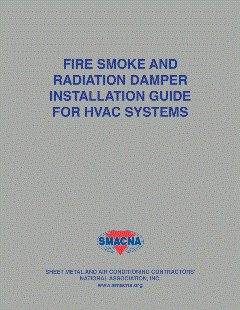 Keeping large buildings well ventilated has always been a challenge. In health care buildings especially, supplying clean fresh air is of utmost importance to prevent CO2 and other contaminants from accumulating. The additional pressures to minimize energy and heat loss add to the difficulties.
Keeping large buildings well ventilated has always been a challenge. In health care buildings especially, supplying clean fresh air is of utmost importance to prevent CO2 and other contaminants from accumulating. The additional pressures to minimize energy and heat loss add to the difficulties.
In the past, many buildings have tackled these issues by using mechanical ventilation systems, drawing in fresh air and extracting stale. But while this eliminates heat and energy loss by making structures airtight, it can result in poor air quality.
The answer to energy efficient, healthily ventilated ambient environments? Natural ventilation.
Unhealthy Buildings
Hospitals are unhealthy places. Given the right conditions, the 10 to 75 litres of carbon dioxide, and 175 grams of water we all exhale hourly can rapidly degrade air quality, contaminate a building, and harm inhabitants. And as the recommended air change rate (the number of times the air within a building should be replaced) is six to eight changes per hour in a hospital ward1, ineffective ventilation can in fact be quite dangerous.
Sick Building Syndrome (SBS) is a condition that can affect any poorly ventilated space such as sealed buildings, and is the result of a pollutant build up. It can cause such problems as asthma; headaches; nausea; shortness of breath; chest, sinus, eye, and throat irritation; and skin problems while reducing concentration and productivity. And with such pollutants as volatile organic chemicals (VOCs), gases like nitrogen dioxide, ozone, carbon monoxide, and biological particles such as bacteria, fungi and pollen in an airtight building, it’s no surprise.
What Is Natural Ventilation?
Allowing harmful particles and stale air to escape a building, natural ventilation simultaneously and passively encourages the flow of fresh air, using wind and pressure differences rather than mechanical ventilation. The simple opening and closing of windows is the most common way to achieve this, but in a large building this is complex. You don’t want the natural ventilation to conflict with the HVAC system, as this would not be an economical solution.
As a result, natural ventilation should be fully automated with strategically placed windows and vents providing air supply and exhaust. Ideally this would be integrated as part of a comprehensive building energy management system (BEMS).
Benefits of intelligent ventilation technology include:
• Healthier environments — The flow of air prevents a harmful contaminant build up.
• Intelligent integration and communication with BEMS — State-of-the-art window actuators allow window position to be accurately controlled and monitored. Motor control modules communicate directly with the BEMS to provide precise feedback of window positions.
• Best climate control is maintained — Natural ventilation systems are configured to operate relative to CO2 levels, outside air temperature, humidity, rain, and wind sensors.
• Early fault warnings are given — A graphical real-time user interface allows notification of exact positions while providing fault and overridden control notifications.
• Increased security — Signals can be sent to confirm that all or selected windows are fully closed outside normal hours.
• Silently integrated — Devices with minimal decibel ratings can be used in buildings such as hospitals so as not to disturb staff or patients.
• Economic solution — Natural ventilation may halve the costs of mechanical ventilation2. The risk of breakdown is also reduced, as is the necessity of cleaning work.
• Minimal carbon — Because they consume less energy, naturally ventilated buildings can produce 40 percent less CO2 than comparable mechanically ventilated buildings3.
Natural Ventilation Problems
As previously mentioned, natural ventilation still has its faults. A stand-alone natural ventilation solution that does not communicate as part of a BEMS can conflict with the HVAC system, making it inefficient. Having windows open and heating or air conditioning running simultaneously, for example, is inefficient and wasteful. It also raises installation costs; installing both heating and temperature sensors would be a conflicting expense.
Fragmented, stand-alone installation of ventilation solutions causes additional difficulty, as supply chain issues occur if numerous parties are involved. This may complicate the servicing and design of the solution. To avoid issues, a seamless solution from a single provider, who is also responsible for the design and installation, is most efficient.
A Healthier Solution
For any building, but especially health care focused ones, natural ventilation clearly provides an attractive, economic solution. Minimal installation, running, and maintenance costs, plus lower energy consumption and integration ease solve a number of building concerns, while making workers, patients, and visitors healthier and focused.
1According to guidance by The Chartered Institution of Building Services Engineers (CIBSE).
2According to the Carbon Trust.
3According to a study by the Danish Technological Institute, 2007.
Publication date: 4/7/2014









